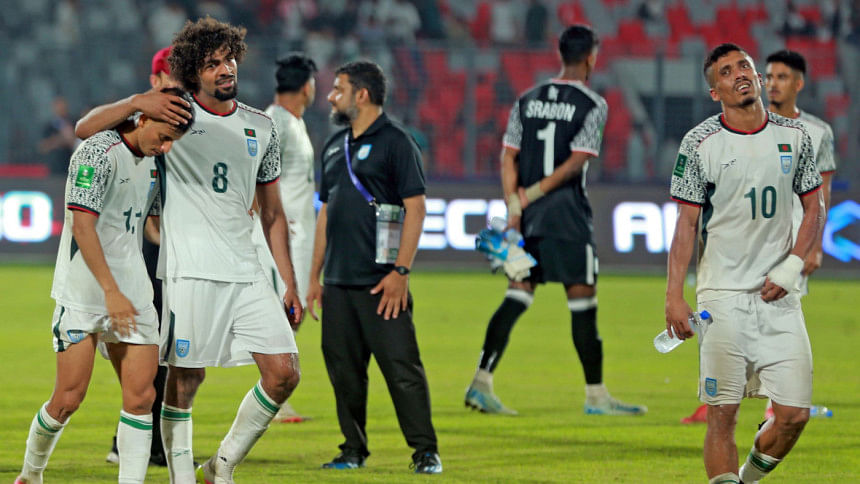Football for the masses, but was it the case during Bangladesh vs Singapore game?

Football has always been a game of the masses. It belongs not to the privileged few in luxury boxes but to the thousands who flock to the galleries, enduring discomfort, queues, and heat -- all in the name of passion.
The AFC Asian Cup Qualifier between Bangladesh and Singapore on June 10 at the newly renovated National Stadium was a reminder of that love. But it also laid bare how the footballing experience in Bangladesh continues to neglect the very people who give it life.
When the Bangladesh Football Federation (BFF) asked spectators to arrive four hours before kickoff, it was asking for a commitment of nearly eight hours -- factoring in travel time and the duration of the game. For a country with sweltering humidity and minimal public comfort, that's not just an ask -- it's a test of loyalty.
The general galleries -- which make up nearly 80% of the stadium's capacity -- were packed. But the experience was far from welcoming. Entry gates were opened 30 minutes late, causing chaos at the entrances. There was a glaring lack of basic amenities: too few food stalls, overpriced items, and insufficient access to water or gender-appropriate restrooms.
Rezaul Hossain Anik, a FIFA volunteer and a spectator on the day, pointed it out: "It didn't make sense to ask people to arrive five hours before kickoff. In international events, entry starts around three hours prior. On top of that, prices were too high, and many people felt helpless. There was no water in the washrooms, and female spectators faced difficulties because many people were not using gender-appropriate restrooms."
Meanwhile, the VIPs and box-holders -- the remaining 20% -- enjoyed smooth entry, parking facilities, and comfortable seating. The imbalance raised a valid question: Who are the real target audiences of football in Bangladesh?

Attempts at fan engagement -- like a laser show or skydive -- fell flat. A two-minute light show at halftime and a concert that overlapped with the players' walkout onto the pitch not only disrupted the game's atmosphere but were also not in accordance with key AFC and FIFA guidelines regarding pre-match procedures.
Yet, the 80% -- the true lifeblood of the game -- bore it all with patience, holding on for what mattered most: the 90 minutes of football.
It is this very 80% -- along with the press -- that draws the sponsors in the first place. They are not here for the glitz, but for the reach.
Still, credit is due where it's deserved. The BFF Competitions Committee and Department did ensure that the match itself was conducted without interruption, despite two major flashpoints -- a scuffle between fans and security before kickoff and fans throwing bottles at referees post-match. Thanks to the efforts of officials like Dewan Abdullah and committee member Tajwar Awal, potential escalation was averted.
Football in Bangladesh is moving in the right direction in terms of excitement and engagement. But for it to become sustainable, it must treat its audience with the respect they deserve.
That begins with transparent ticketing, allowing fans to enter freely once they have tickets, and easing congestion at gates through a three-layer security system. Facilities like water, food, and washrooms should be standard, not luxuries. Entertainment can enhance the atmosphere, but only in its rightful place -- not at the expense of the players or the sanctity of the game.
At its core, football is not about the sponsors or shows -- it's about the game and the people who believe in it. And if football truly is for the masses, the system must reflect that in every decision made.
**Ahmed Shaaek is a football management analyst.

 For all latest news, follow The Daily Star's Google News channel.
For all latest news, follow The Daily Star's Google News channel. 



Comments